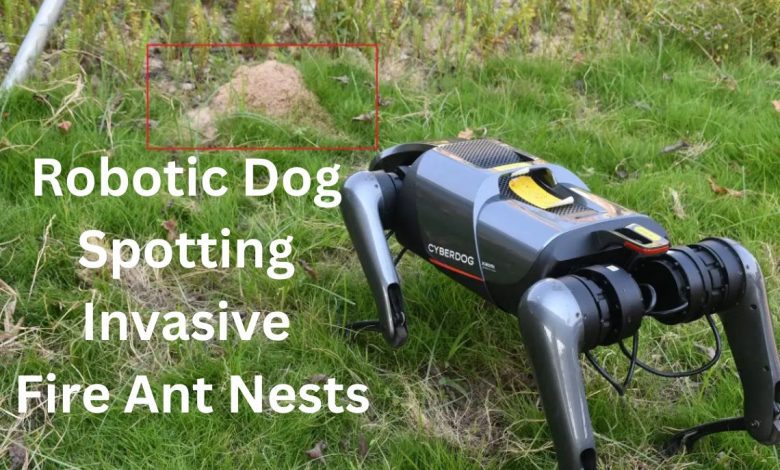Robotic Dog Spotting Invasive Fire Ant Nests Better Than Humans

Today we will know how robotic dogs are better than humans at detecting invasive fire ant nests. Robots can be useful in helping eradicate an invasive species.
Introduction
Invasive fire ants have long been a challenge worldwide, wreaking havoc on ecosystems and posing risks to agriculture, wildlife, and human health. However, a remarkable technological breakthrough is revolutionizing the way we identify fire ant nests. Robotic dogs equipped with advanced sensors and artificial intelligence (AI) are proving to be more efficient than humans in detecting these nests. In this article, we will explore the problem of invasive fire ants, delve into the capabilities of robotic dogs, discuss their superiority over humans in identifying fire ant nests, and highlight the advantages and implications of this innovative technology.
The Problem of Invasive Fire Ants: A Global Challenge
Invasive fire ants, such as the notorious red imported fire ants, have become a significant ecological and economic problem in many regions. These aggressive ants can rapidly establish large colonies, displacing native species, damaging crops, and even posing a threat to human and animal health due to their venomous bites. Locating and eliminating fire ant nests is crucial for effective pest control, but it can be a challenging and time-consuming task.
Robotic Dogs: A New Solution to Identify Fire Ant Nests
Enter the robotic dogs, an innovative solution that promises to revolutionise fire ant nest detection. These robotic canines are equipped with sophisticated sensors, including cameras, thermal imaging, and chemical detectors, all integrated with AI algorithms. Designed to mimic the behaviour and capabilities of real dogs, these robotic counterparts can navigate difficult terrains, sniff out ant pheromones, and accurately pinpoint fire ant nests.
How Robotic Dogs Outperform Humans in Spotting Fire Ant Nests
Robotic dogs offer several advantages over humans when it comes to identifying fire ant nests. Firstly, their advanced sensors and AI algorithms enable them to detect subtle cues that may go unnoticed by the human eye. This includes identifying specific chemical signatures released by fire ants or even thermal variations associated with underground nests. Secondly, robotic dogs can cover large areas quickly and efficiently, significantly reducing the time and manpower required for nest detection. Their tireless nature allows for extended operations without the limitations of fatigue or distractions.
Advantages and Implications of Robotic Dog Technology
The deployment of robotic dogs in fire ant nest detection brings several advantages and implications. Firstly, it enhances the efficiency of pest control efforts by speeding up the identification process and enabling targeted treatments. This can result in more effective eradication of fire ant populations and reduced environmental impact from the use of pesticides. Secondly, robotic dogs reduce the risks faced by humans in dealing with fire ants, such as bites and allergic reactions. They provide a safer alternative for surveying and monitoring infested areas.
Conclusion:
Robotic dogs have emerged as game-changers in the fight against invasive fire ants. With their advanced sensors, AI algorithms, and ability to cover large areas efficiently, these robotic canines surpass human capabilities in spotting fire ant nests. By leveraging this innovative technology, we can improve the efficiency and effectiveness of fire ant control efforts, minimise risks to humans, and mitigate the ecological and economic damage caused by these invasive pests.
The utilization of robotic dogs for fire ant nest detection represents a significant step forward in pest control strategies. As technology continues to evolve, we can expect further advancements in robotics and AI to aid in the management of invasive species. By harnessing